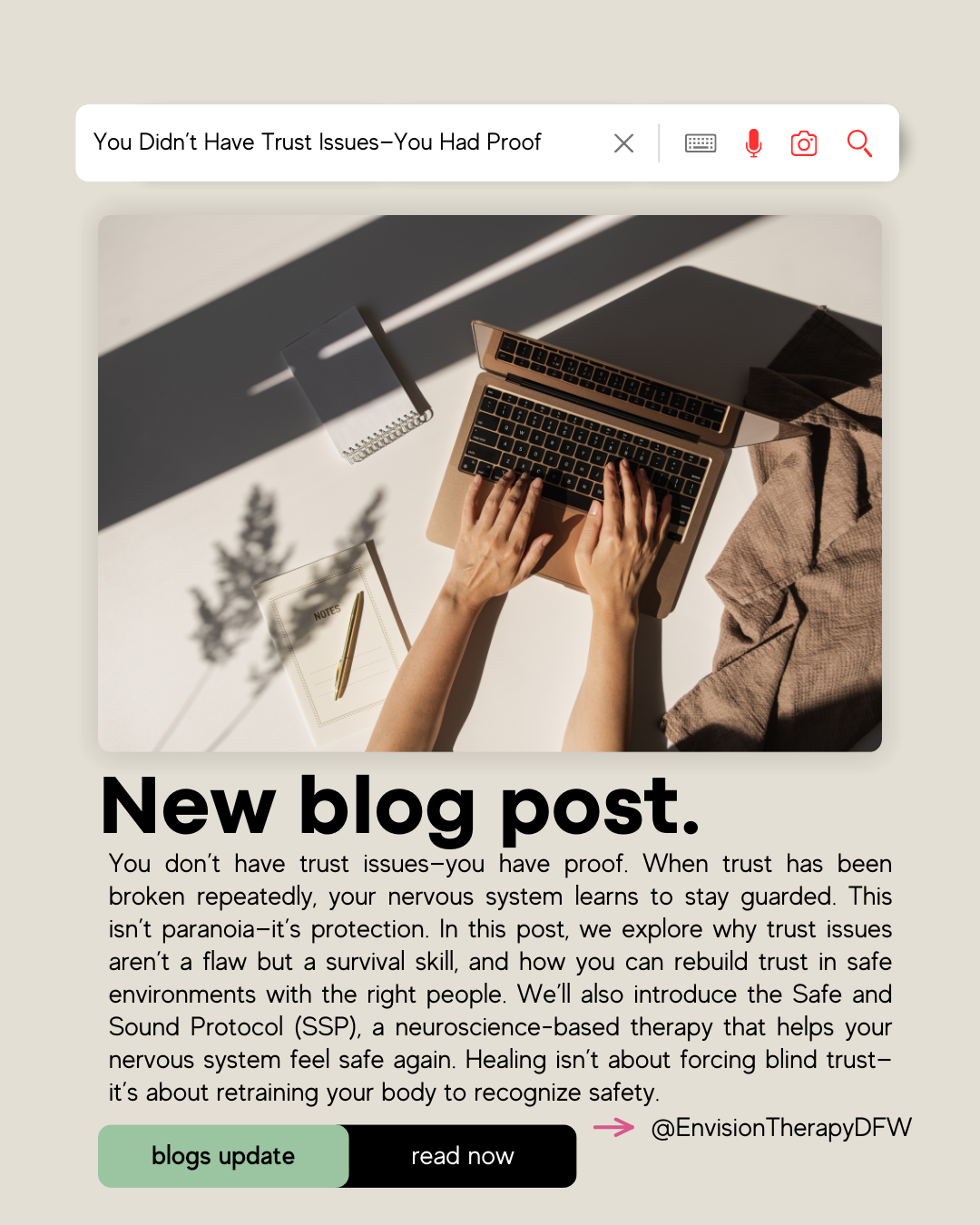What if your inability to trust wasn’t paranoia, but self-protection?
How many times have you been told, “You just have trust issues”?
As if trust is something you should hand out freely, no matter how many times it’s been broken. As if the walls you built around yourself appeared out of nowhere. As if being cautious with people isn’t a reasonable response to past betrayal.
But here’s the truth: you don’t have trust issues. You have proof.
Trust isn’t something you’re supposed to give without thought—it’s something that is earned, built, and reinforced over time. And if you struggle to trust, it’s not because you’re paranoid. It’s because your brain remembers.
This isn’t a flaw. It’s a survival skill.
Distrust Isn’t a Defect—It’s a Learned Survival Skill
Why Does It Feel So Hard to Trust?
Trust isn’t just an idea—it’s a biological experience. When you feel safe with someone, your nervous system relaxes. Your brain stops scanning for danger, and your body shifts into a state of ease.
But if you’ve been repeatedly let down, lied to, manipulated, or abandoned, your brain doesn’t forget. Instead, it adjusts.
Your nervous system learns that trust isn’t safe.
So, it builds walls. It becomes skeptical. It stops assuming the best in people because, in the past, that assumption cost you too much.
This isn’t you being dramatic. It’s your body trying to protect you from pain.
And the more people tell you to “just trust” without proving themselves safe, the more invalidating it feels. Because your trust struggles aren’t random—they’re built on evidence.
Your hesitation isn’t the problem. The people who made hesitation necessary are.
Misconceptions About Trust: What the World Gets Wrong
Lie #1: “You Just Need to Learn to Trust Again”
Trust isn’t something you just decide to do.
People act like trust is a switch you can flip on and off. “You need to let your guard down.” “Not everyone is like that.” “You’ll never be happy if you don’t trust people.”
But trust isn’t about willpower. It’s a response to consistent safety. If someone has broken your trust—or if multiple people have—you can’t force yourself to feel safe with them.
Because trust isn’t a choice. It’s a reaction to lived experiences.
Lie #2: “You’re Too Guarded”
People who haven’t experienced deep betrayal don’t understand why you hesitate. They might say you’re too closed off or too suspicious.
But here’s the reality:
Being too trusting in the past is what got you hurt.
And your brain, being the incredible survival machine that it is, decided: Never again.
That’s not irrational. That’s learning from experience.
Lie #3: “You Need to Stop Expecting the Worst”
Some will tell you that expecting people to hurt you creates that reality. That your distrust pushes people away.
But let’s get real:
People who have proven themselves untrustworthy don’t get to demand blind faith.
You don’t owe anyone your vulnerability. And if people tell you to “just trust” without putting in the work to earn it, that’s a red flag—not a personal failing on your part.
How to Work With Your Trust Issues Instead of Against Them
1. Honor Your Hesitation Instead of Shaming It
Instead of forcing yourself to just trust, try this:
✔ Acknowledge why your brain is hesitant.
✔ Validate your past experiences.
✔ Remind yourself that trust isn’t an obligation—it’s a privilege.
Your brain learned to be careful for a reason. Listen to it.
2. Stop Feeling Guilty for Having Boundaries
If trust has been broken before, it makes sense that you need more proof before letting people in. This doesn’t make you difficult. It makes you intentional.
Set boundaries that make trust feel safe again:
✔ Take your time. You don’t have to let people in just because they expect it.
✔ Watch actions, not just words. Promises mean nothing without follow-through.
✔ Trust at your own pace. Not on anyone else’s timeline.
3. Surround Yourself with Emotionally Safe People
Trust doesn’t just happen—it’s built in the right environment. When you’re around safe, reliable, and consistent people, your nervous system slowly recalibrates.
✔ Look for patterns of consistency. Does this person show up for you over time?
✔ Notice how you feel in their presence. Does your body relax, or do you feel tense?
✔ Check if they respect your boundaries. Do they get defensive, or do they listen?
4. Use the Safe and Sound Protocol (SSP) to Rewire Your Nervous System
Sometimes, even when we’re around good people, our bodies don’t trust them yet.
That’s because trauma and past betrayal keep our nervous system stuck in high alert mode.
One of the most effective ways to reset this? The Safe and Sound Protocol (SSP).
SSP is a neuroscience-based listening therapy that helps your nervous system feel safe again by training your brain to recognize safety in voices, environments, and relationships.
If you struggle with trust, hyper-vigilance, or feeling constantly guarded, SSP can help your body unlearn survival mode.
Trust Isn’t About Blind Faith—It’s About Learning Who’s Worthy
You don’t have trust issues. You have proof that trust, when given carelessly, has consequences.
Your hesitation isn’t something to get rid of—it’s something to honor.
Because trust isn’t about being “open.” It’s about being in the right environment with the right people.
And when you find those people—when you surround yourself with safe, consistent, emotionally mature individuals—your brain will naturally start to relax.
Trust isn’t a decision. It’s an outcome of feeling safe again.
Click here to learn more about how the Safe and Sound Protocol can help regulate your nervous system and rebuild trust in a way that feels safe.
Or reach out today to schedule a consultation with one of our therapists who specialize in healing from betrayal, anxiety, and emotional trauma.

